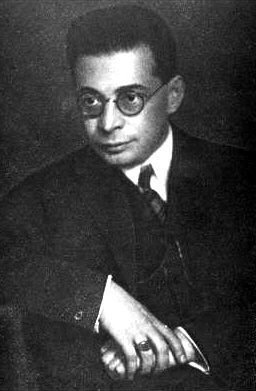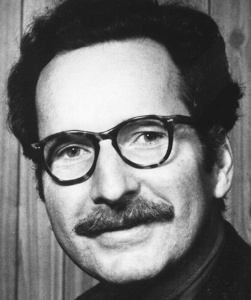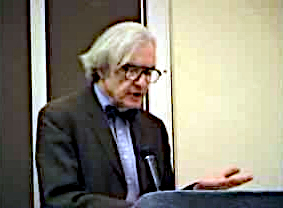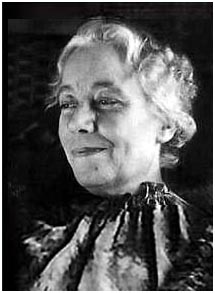
A hero is a real person or a main fictional character who, in the face of danger, combats adversity through feats of ingenuity, courage, or strength. The original hero type of classical epics did such things for the sake of glory and honor. Post-classical and modern heroes, on the other hand, perform great deeds or selfless acts for the common good instead of the classical goal of wealth, pride, and fame. The antonym of hero is villain. Other terms associated with the concept of hero may include good guy or white hat.
Psychoanalysis is a set of theories and therapeutic techniques that deal in part with the unconscious mind, and which together form a method of treatment for mental disorders. The discipline was established in the early 1890s by Sigmund Freud, whose work stemmed partly from the clinical work of Josef Breuer and others. Freud developed and refined the theory and practice of psychoanalysis until his death in 1939. In an encyclopedic article, he identified the cornerstones of psychoanalysis as "the assumption that there are unconscious mental processes, the recognition of the theory of repression and resistance, the appreciation of the importance of sexuality and of the Oedipus complex." Freud's colleagues Alfred Adler and Carl Gustav Jung developed offshoots of psychoanalysis which they called individual psychology (Adler) and analytical psychology (Jung), although Freud himself wrote a number of criticisms of them and emphatically denied that they were forms of psychoanalysis. Psychoanalysis was later developed in different directions by neo-Freudian thinkers, such as Erich Fromm, Karen Horney, and Harry Stack Sullivan.

Sigmund Freud was an Austrian neurologist and the founder of psychoanalysis, a clinical method for evaluating and treating pathologies seen as originating from conflicts in the psyche, through dialogue between patient and psychoanalyst, and the distinctive theory of mind and human agency derived from it.
Neurosis is a term mainly used today by followers of Freudian thinking to describe mental disorders caused by past anxiety, often that has been repressed. In recent history, the term has been used to refer to anxiety-related conditions more generally.
In psychoanalytic theory, the id, ego and superego are three distinct, interacting agents in the psychic apparatus, defined in Sigmund Freud's structural model of the psyche. The three agents are theoretical constructs that Freud employed to describe the basic structure of mental life as it was encountered in psychoanalytic practice. Freud himself used the German terms das Es, Ich, and Über-Ich, which literally translate as "the it", "I", and "over-I". The Latin terms id, ego and superego were chosen by his original translators and have remained in use.

Otto Rank was an Austrian psychoanalyst, writer, and philosopher. Born in Vienna, he was one of Sigmund Freud's closest colleagues for 20 years, a prolific writer on psychoanalytic themes, editor of the two leading analytic journals of the era, managing director of Freud's publishing house, and a creative theorist and therapist. In 1926, Rank left Vienna for Paris and, for the remainder of his life, led a successful career as a lecturer, writer, and therapist in France and the United States.

Ernest Becker was an American cultural anthropologist and author of the 1974 Pulitzer Prize-winning book, The Denial of Death.

Civilization and Its Discontents is a book by Sigmund Freud, the founder of psychoanalysis. It was written in 1929 and first published in German in 1930 as Das Unbehagen in der Kultur. Exploring what Freud sees as the important clash between the desire for individuality and the expectations of society, the book is considered one of Freud's most important and widely read works, and was described in 1989 by historian Peter Gay as one of the most influential and studied books in the field of modern psychology.

Robert Jay Lifton is an American psychiatrist and author, chiefly known for his studies of the psychological causes and effects of wars and political violence, and for his theory of thought reform. He was an early proponent of the techniques of psychohistory.
Norman Oliver Brown was an American scholar, writer, and social philosopher. Beginning as a classical scholar, his later work branched into wide-ranging, erudite, and intellectually sophisticated considerations of history, literature, psychoanalysis, culture, and other topics. Brown advanced some novel theses and in his time achieved some general notability.
Terror management theory (TMT) is both a social and evolutionary psychology theory originally proposed by Jeff Greenberg, Sheldon Solomon, and Tom Pyszczynski and codified in their book The Worm at the Core: On the Role of Death in Life (2015). It proposes that a basic psychological conflict results from having a self-preservation instinct while realizing that death is inevitable and to some extent unpredictable. This conflict produces terror, which is managed through a combination of escapism and cultural beliefs that act to counter biological reality with more significant and enduring forms of meaning and value—-basically countering the personal insignificance represented by death with the significance provided by symbolic culture.

Flight from Death is a 2003 documentary film that investigates the relationship of human violence to fear of death, as related to subconscious influences. The film describes death anxiety as a possible root cause of many human behaviors on a psychological, spiritual, and cultural level. It was directed by Patrick Shen, produced by Greg Bennick, and narrated by Gabriel Byrne.
Repetition compulsion is the unconscious tendency of a person to repeat a traumatic event or its circumstances. This may take the form of symbolically or literally re-enacting the event, or putting oneself in situations where the event is likely to occur again. Repetition compulsion can also take the form of dreams in which memories and feelings of what happened are repeated, and in cases of psychosis, may even be hallucinated.

Beyond the Pleasure Principle is a 1920 essay by Sigmund Freud. It marks a major turning point in the formulation of his drive theory, where Freud had previously attributed self-preservation in human behavior to the drives of Eros and the regulation of libido, governed by the pleasure principle. Revising this as inconclusive, Freud theorized beyond the pleasure principle, newly considering the death drives which refers to the tendency towards destruction and annihilation, often expressed through behaviors such as aggression, repetition compulsion, and self-destructiveness.
Free Press was an American independent book publisher that later became an imprint of Simon & Schuster. It was one of the best-known publishers specializing in serious nonfiction, including path-breaking sociology books of the 1950s, 1960s and 1970s. After a period under new ownership in the 1980s of publishing neoconservative books, it was purchased by Simon & Schuster in 1994. By 2012, the imprint ceased to exist as a distinct entity; however, some books were still being published using the Free Press imprint.
In psychoanalysis, foreclosure is a specific psychical cause for psychosis, according to French psychoanalyst Jacques Lacan.

Karen Horney was a German psychoanalyst who practiced in the United States during her later career. Her theories questioned some traditional Freudian views. This was particularly true of her theories of sexuality and of the instinct orientation of psychoanalysis. She is credited with founding feminist psychology in response to Freud's theory of penis envy. She disagreed with Freud about inherent differences in the psychology of men and women, and like Adler, she traced such differences to society and culture rather than biology.
Psychoanalytic sociology is the research field that analyzes society using the same methods that psychoanalysis applies to analyze an individual.
Sigmund Freud's views on religion are described in several of his books and essays. Freud considered God as a fantasy, based on the infantile need for a dominant father figure, with religion as a necessity in the development of early civilization to help restrain our violent impulses, that can now be discarded in favor of science and reason.

Death anxiety is anxiety caused by thoughts of one's own death, and is also known as thanatophobia. Individuals affected by this kind of anxiety experience challenges and adversities in many aspects of their lives. Death anxiety is different from necrophobia, which refers to an irrational or disproportionate fear of dead bodies or of anything associated with death. Death anxiety has been found to affect people of differing demographic groups as well, such as men versus women, young versus old, etc. Different cultures can manifest aspects of death anxiety in differing degrees.










